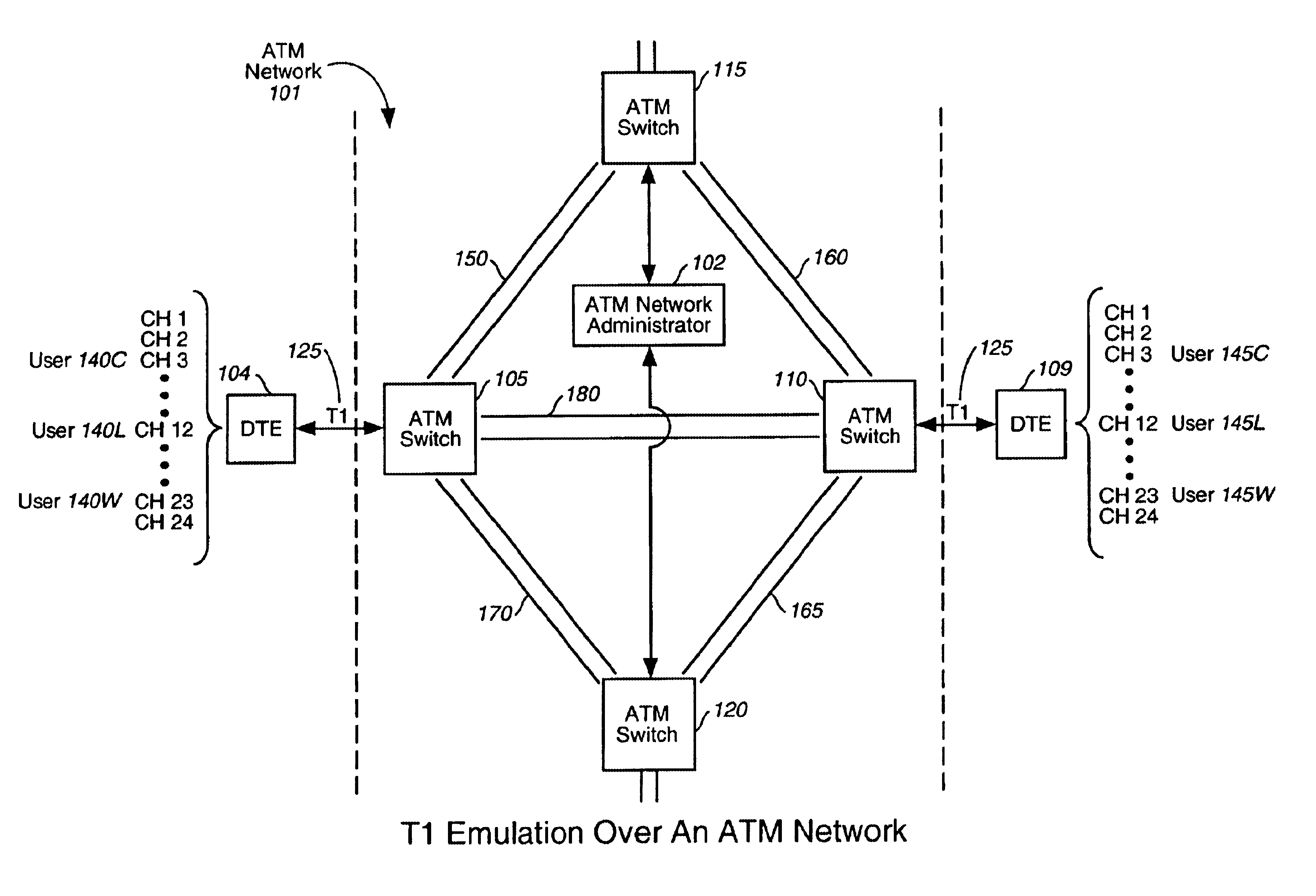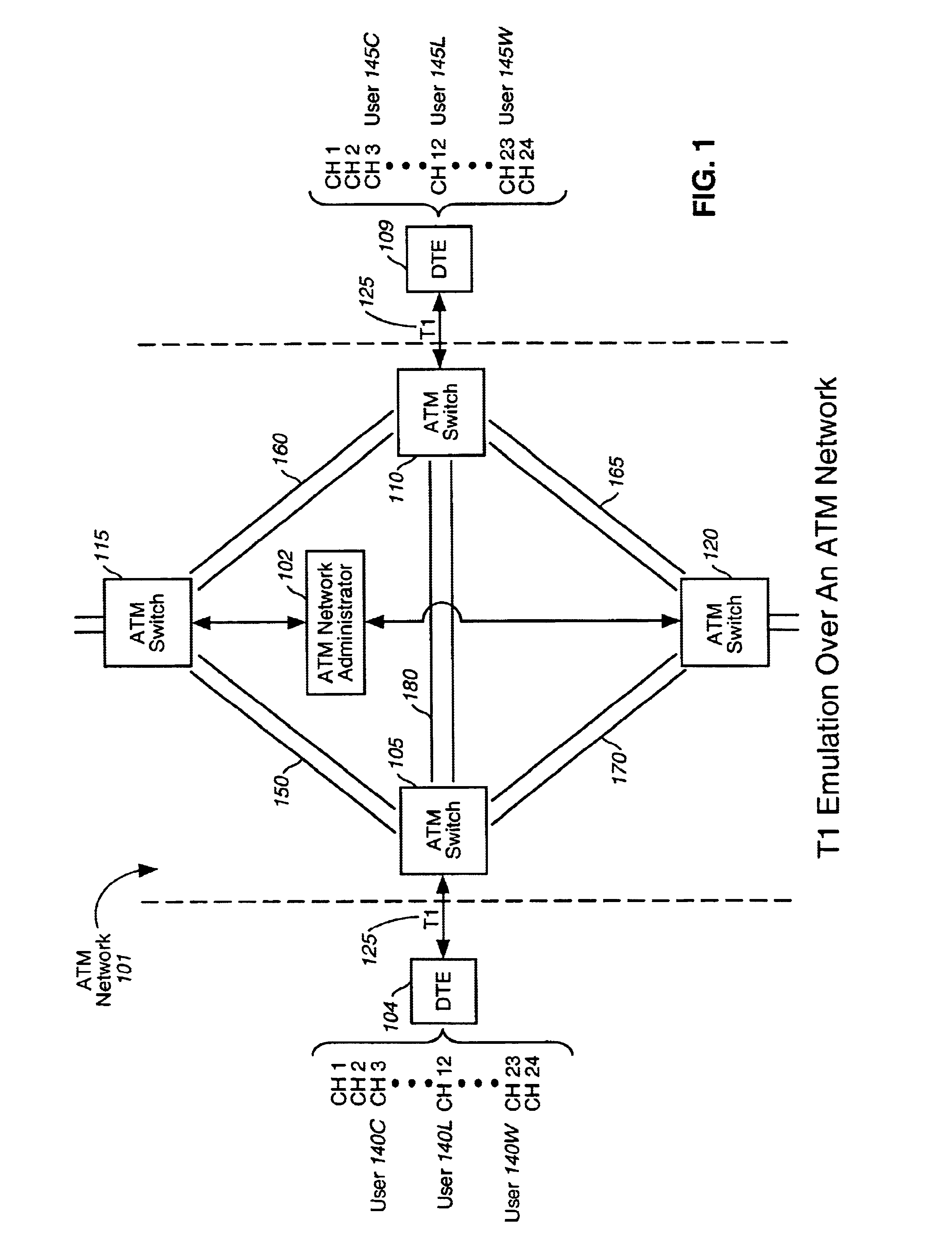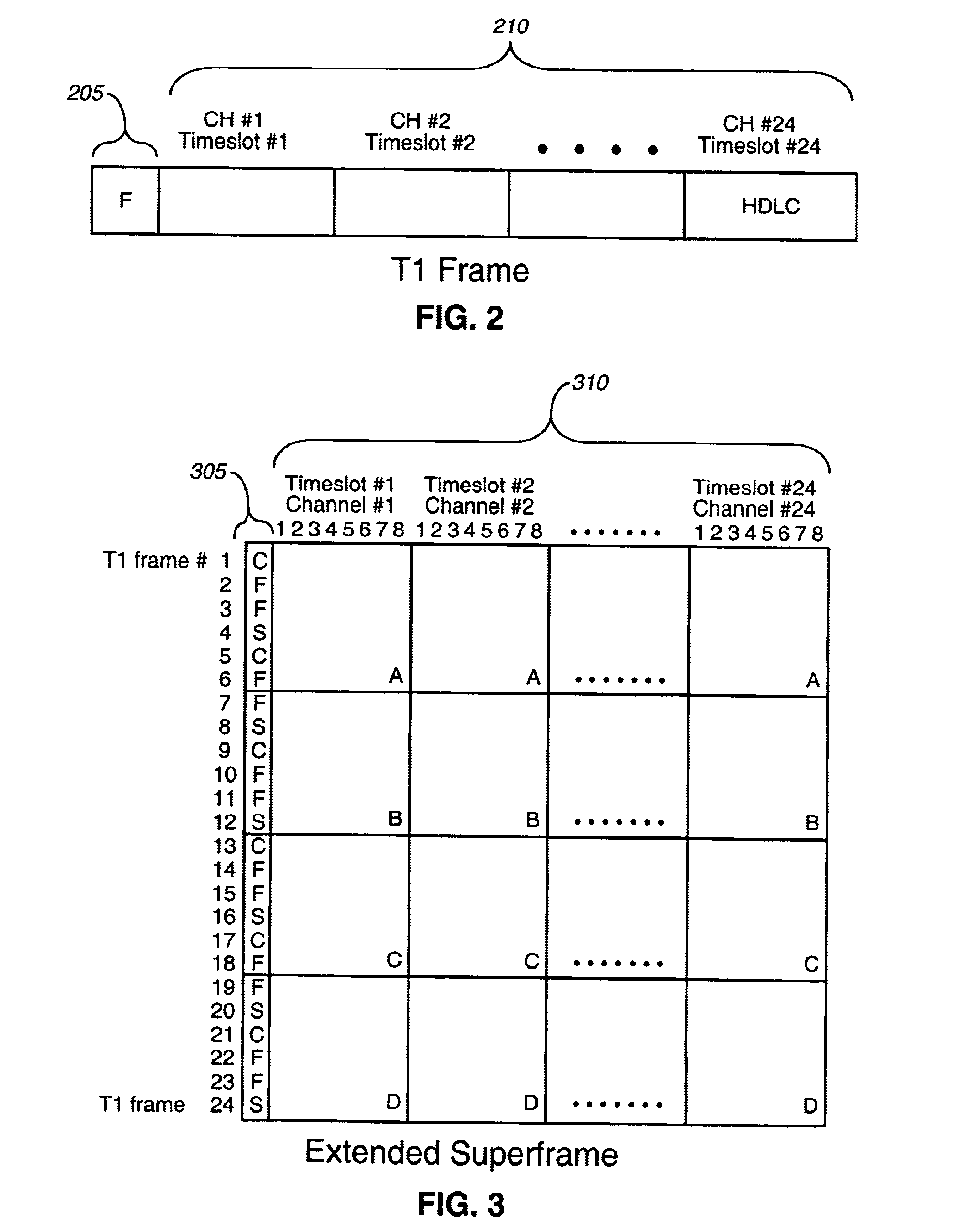Method, apparatus and computer program product for interfacing a TDM link with a cell-switched network
a cell-switched network and time domain multiplexing technology, applied in data switching networks, multiplex communication, digital transmission, etc., can solve the problems of rust and corrosion of metallic links, ineffective channel dedication of 1.544 mbps capacity of t1 links, and relatively chemically inert fibers
- Summary
- Abstract
- Description
- Claims
- Application Information
AI Technical Summary
Benefits of technology
Problems solved by technology
Method used
Image
Examples
Embodiment Construction
XI. Conclusion
I. Overview
The present invention is directed toward interfacing a time domain multiplexed (TDM) link with a cell-switched network. In one embodiment, the TDM link is a standard T1 link and the cell switched network is an Asynchronous Transfer Mode (ATM) network. The T1 link supports one or more active channels and one or more idle channels. The T1 link supplies T1 frames which carry a sample of each channel in a dedicated timeslot. During frame transmission, a port card removes the idle timeslots from each T1 frame to create compressed T1 frames. The compressed T1 frames are then loaded into ATM cells which are sent over the ATM network. During reception, a port card restores the idle timeslots that were removed during transmission.
II. Terminology
To more clearly delineate the present invention, an effort is made throughout the specification to adhere to the following term definitions as consistently as possible. These definitions may be discussed throughout the specifi...
PUM
 Login to View More
Login to View More Abstract
Description
Claims
Application Information
 Login to View More
Login to View More - R&D
- Intellectual Property
- Life Sciences
- Materials
- Tech Scout
- Unparalleled Data Quality
- Higher Quality Content
- 60% Fewer Hallucinations
Browse by: Latest US Patents, China's latest patents, Technical Efficacy Thesaurus, Application Domain, Technology Topic, Popular Technical Reports.
© 2025 PatSnap. All rights reserved.Legal|Privacy policy|Modern Slavery Act Transparency Statement|Sitemap|About US| Contact US: help@patsnap.com



